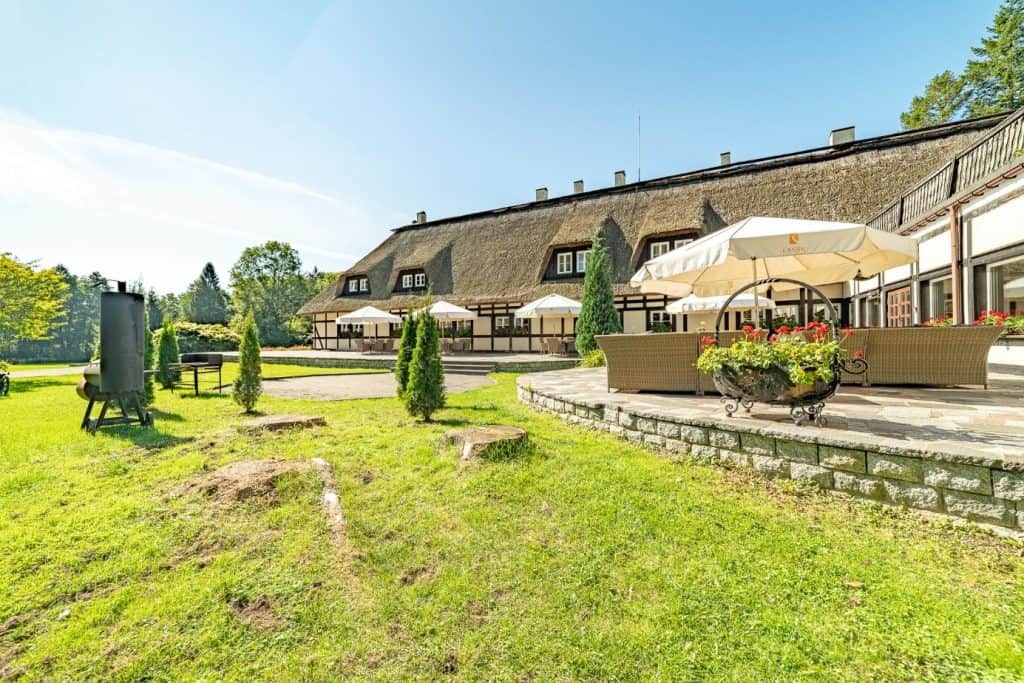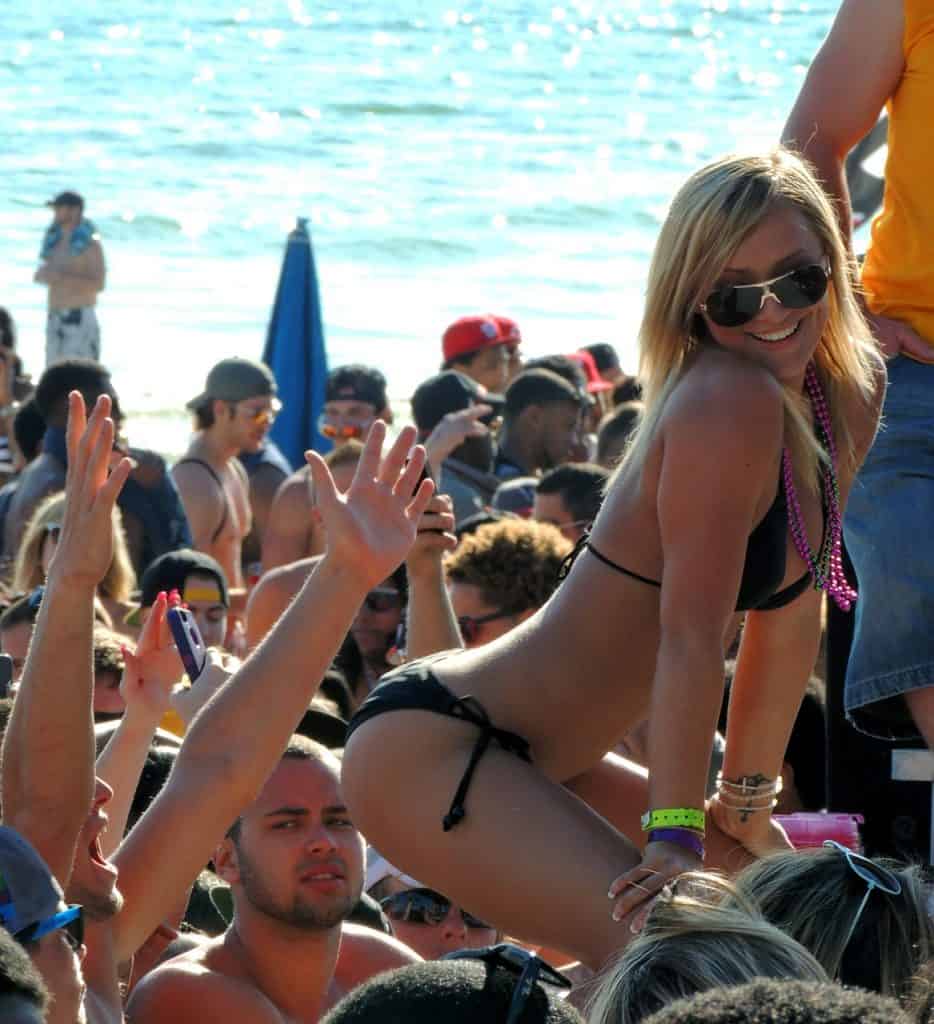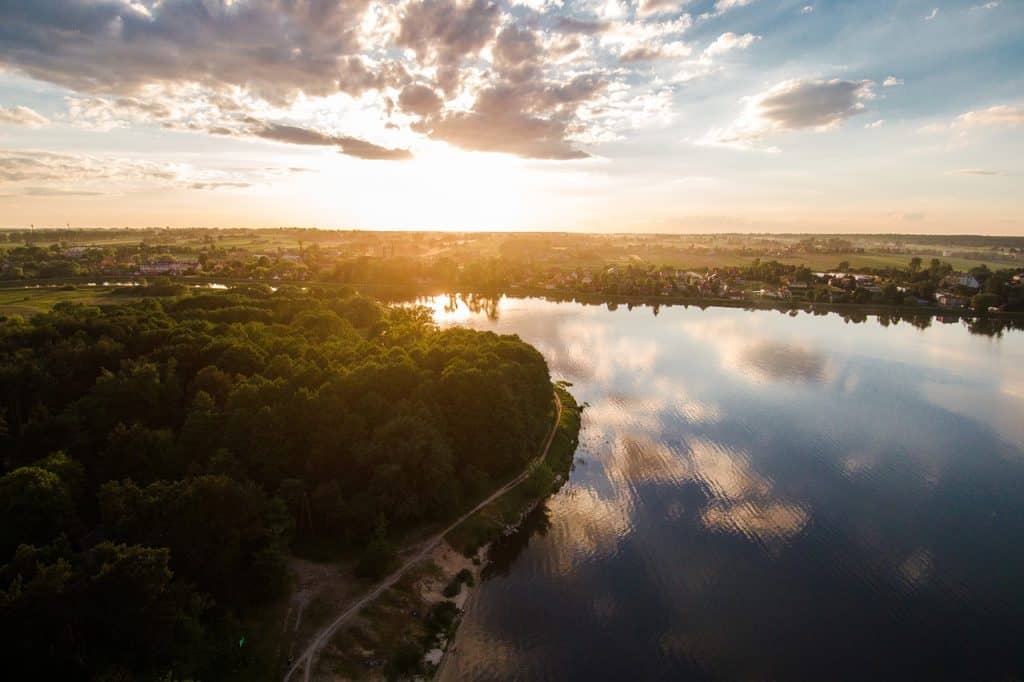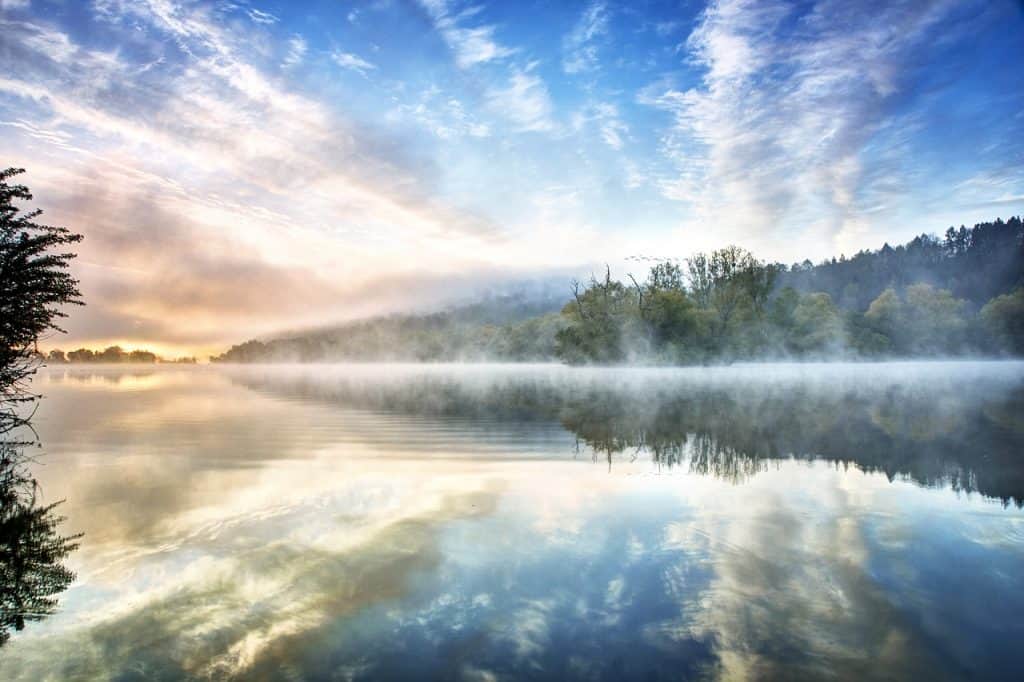How to get to Lake Łańskie
Łańskie Lake is located in the Olsztyn Lakeland, approximately 20 kilometers from Olsztyn. It could mean there is good access, but it is deceptive. For more than 50 years there has been a military unit at the lake that inspected the government lunch there. So there were no traveling passengers for tourists, and there were no roads to roads. Now the resort is generally accessible, but the roads have not been expanded. To go over the inscription, one of the two paths must be chosen. You can leave the S51 expressway in Stawiguda and follow forest roads to Łańcut. You can also go on the other side – the national road No. 58 to Kurek and there you can go the eastern side to the Lalka Peninsula or the western side to Rybaki. The roads around the lake are asphalt, very narrow and full of holes.

Description of the lake
Lake Łańskie is quite big. The surface area of the Water mirror is 1070 hectares. It is also up to 54 meters deep. Average depth up to 16 meters. The lake is occupied by a longitudinal channel. The coastline is varied. There are several bays and peninsulas as well as islands. The title of them, called Stodółka, covers 5 hectares. Almost the entire shore is covered with forests. Forests in the eastern legal country are protected in the Las Warmiński reserve.
Tourism on the lake
Nowadays, anyone can come to the lake – there are no more soldiers to guard access. However, nearly 50 years of restricting access are doing their job. There are no public beaches in the resort. You have to go to one of several centers. Currently working three. On the west bank there is a sanatorium belonging to Caritas. In the northern end you will find the governmental Łańsk Recreation Center, and on the Lalka peninsula, a local sailing center. There was one more center – Cyranka. Currently, it is in private hands and is not open to tourists.
History includes Łańsk
The pre-war and post-war history is connected with Łański, which makes this picturesque place unique. The holiday center was established in the 1950s for the purpose of training for the government. It became famous as a legendary health resort and hunting place of communist dignitaries and visits of many selected guests. The unique object of Portugal is also among other things in the legend of the prohibition of entry to the so-called “Latin empire”. The historical value of Łańsk is the architecture of the buildings. “Puszcza” is a pre-war hunting lodge with architecture characteristic for the region of Warmia and Mazury in a half-timbered structure with a thatched roof. Another object, architecturally referring to the typical architecture of this region, is the half-timbered villa “Gawra” (currently under revitalization), located on the lake. The villas “Leszcz”, “Okoń” and “Stynka” are typical buildings erected in the 50’s-60’s of the twentieth century and a testimony of architecture from the communist period. The “Finka” type houses are a model of Scandinavian architecture of the 70’s that meet the criteria of a suburban bungalow. Over the next years, Łańsk was visited by many politicians: Hermann Goering, Bolesław Bierut, Władysław Gomułka, Mieczysław Rakowski, Nikita Chruszczow, Leonid Breżniew, Ko Er, Teodor Palimąka, Jacek Kuroń, as well as many users of the Polish government from the last 30 years. The resort is now open to the public for anyone who makes a reservation.
Łańskie Lake for anglers
The relief of the bottom is very varied with numerous deep and underwater hills. The coastal shoal is sandy and silty, the bottom is muddy, sometimes rocky. The vegetation is rather sparse. The following fish are found here: asp, tench, burbot, perch, brown trout, pike perch, whitefish, pike, lake trout, eel. The lake is leased by Szwaderki Fish Farm. There you must also buy a permit to fish. As there were very few people here until 1990, the lake was not freshly stocked, it was a paradise for anglers. Later, that it would change and the fish would be significantly reduced. The farm received funding from the European Fisheries Fund, the Fish Operational Program 2007-13. This allowed me to upgrade my aquaculture facilities as well as add farming by oxygenating the water. The result is intensive restocking from 2017. It seems that after a 30-year break, it will be a paradise for anglers again.


